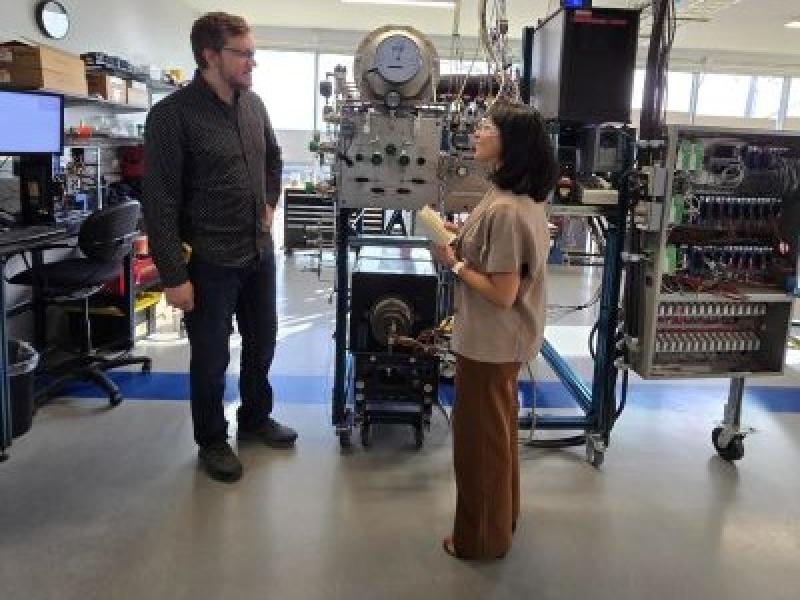
Enurgen is commercializing a decade of research on the solar energy industry with the Ottawa company's software platform which optimizes the performance of utility-scale projects.
Co-founded in December 2022 by engineers Kibby Pollak and Christopher Valdivia, the company’s product models the energy yields of solar farm designs. With this information on hand, the aim is for companies to develop more effective, economically viable projects.
Named DUET, it is the result of years of study at the University of Ottawa on addressing the industry’s challenges with bifacial solar cells, CEO Pollak said in an interview with Sustainable Biz Canada.
“But the approach that we took, it turned out that it extended much beyond just modelling bifacial solar cells and power plants in general,” he said. “It extended to a much more accurate and precise model that can be run at scale for significantly more complex power plant designs.”
The rapid growth of the solar industry has resulted in a shortage of the most desirable land for development that accommodates simple designs. Developers are now often faced with installing projects on terrain where modelling is more complicated, leading to accuracy issues. DUET works to address the problem by precisely calculating the potential energy generation of a project, down to the cell.
As a result, solar developments can generate an optimal yield, Pollak said, and produce up to tens of millions of dollars in additional revenue across their lifespan.
DUET's digital twin for solar projects
DUET can play a role in three major stages of a project’s life cycle.
In the pre-construction phase, DUET can calculate the expected energy yield of a project on a given site based on features such as the geography and typical sunlight.
Once the project has been financed and is in the building phase, engineers can use DUET’s tools to determine if the project is “actually meeting its design specification in order for it to actually come online,” Pollak said.
When the project is operational, DUET determines if it is operating according to the model, drawing upon data points such as weather conditions and predicted solar resources.
“It’s essentially a digital twin of the asset that’s based on a physics-based model,” Pollak said.
The diagnostics will help identify issues impeding the operations of the project. Once found, they can be resolved.
The software helps to boost a project’s rate of return in the design phase, Pollak said, de-risking a development when a company goes to raise funds.
Enurgen aims to increase the rate of return of a project by a minimum of one per cent, he explained. Though he could not quantify the size of an average solar farm, Pollak suggested that translates into a potential revenue increase of between $5 million and $30 million over the lifetime of a facility.
DUET was launched in Q1 this year, and has been used by independent power producers (IPPs) which are designing, building, owning and operating solar assets, Pollak said.
“What we’re able to do is essentially make solar much more competitive or make this power producer much more competitive in the market.”
Enurgen plots global expansion
DUET has been deployed in 130 solar projects around the world, Pollak said, amounting to over two gigawatts worth of installations in the last 12 months.
It has been piloted by energy companies and engineering firms, including approximately 30 IPPs.
DUET's popularity has been growing recently, Pollak said, which he attributed to the software’s ability to relieve pressure points afflicting the solar industry.
Enurgen generates revenue from DUET with payment models that depend on the customer profile. If a company is using it purely for the pre-construction stage, it is typically offered through a software-as-a-service (SaaS) license. For IPPs, DUET will be offered through a SaaS model, with a fee based on the size of the asset.
To fuel its global expansion, the company has received US$4.1 million in seed financing in a round led by the Business Development Bank of Canada, Brightspark and Diagram. The company has now raised approximately US$5.4 million.
Pollak plans to use the funds to expand its efforts with existing clients and meet the needs of new customers in markets in the U.S., Europe, Asia-Pacific and South America.
The funds will also assist in developing a model that will examine how a co-located solar and energy storage project will interface with the electric grid. By providing greater clarity, it will accelerate the deployment of renewable infrastructure, Pollak explained.
“We’re only going to double down there and accelerate our marketing efforts and sales efforts in those regions,” he said.










